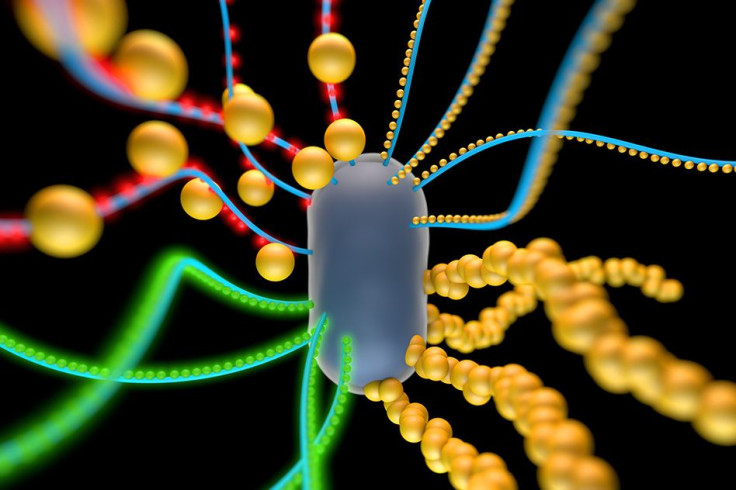Futuristic ‘Living Materials’ Created From E. Coli And Gold Nanoparticles Can Adapt To The Environment

Researchers from the Massachusetts Institute of Technology are creating “living material” that could, one day, adapt to the environment or gain added properties to enhance performance.
MIT engineers combined E. coli as it produces a biofilm, which allows cells to stick together on a surface, containing “curli fibers.” According to the researchers, these curli fibers are used by E. coli -- a bacterium found in contaminated food that can be lethal -- to better attach to surfaces and can also be manipulated to include nanoparticles of gold.
In order to create the “living material,” the researchers controlled how much curli fiber was produced by increasing or decreasing the amount of a molecule called “AHL” and then engineered the bacterium to produce enough histidine, an amino acid that would capture gold nanoparticles. After the engineers introduced enough gold nanoparticles, the biofilm would produce gold nanowire. The researchers were also able to create a system that let the E. coli cells control the creation of the biofilm.
Senior author Timothy Lu said in a statement, “It’s a really simple system, but what happens over time is you get curli that’s increasingly labeled by gold particles. It shows that indeed you can make cells that talk to each other and they can change the composition of the material over time.”
Quantum dots, crystal particles “that exhibit quantum mechanical properties,” were added to the biofilm in a similar fashion, with engineers manipulating the curli fiber to produce a peptide, a protein fragment, that will grab onto the quantum dot.
By combining the living with the nonliving, the researchers hope to create self-adaptive material that grows and responds to its environment. The technology could be used in solar panels, in batteries or to break down waste into biofuels.
“Our idea is to put the living and the nonliving worlds together to make hybrid materials that have living cells in them and are functional,” said Lu. The research was published in the journal Nature Materials.
© Copyright IBTimes 2024. All rights reserved.






















